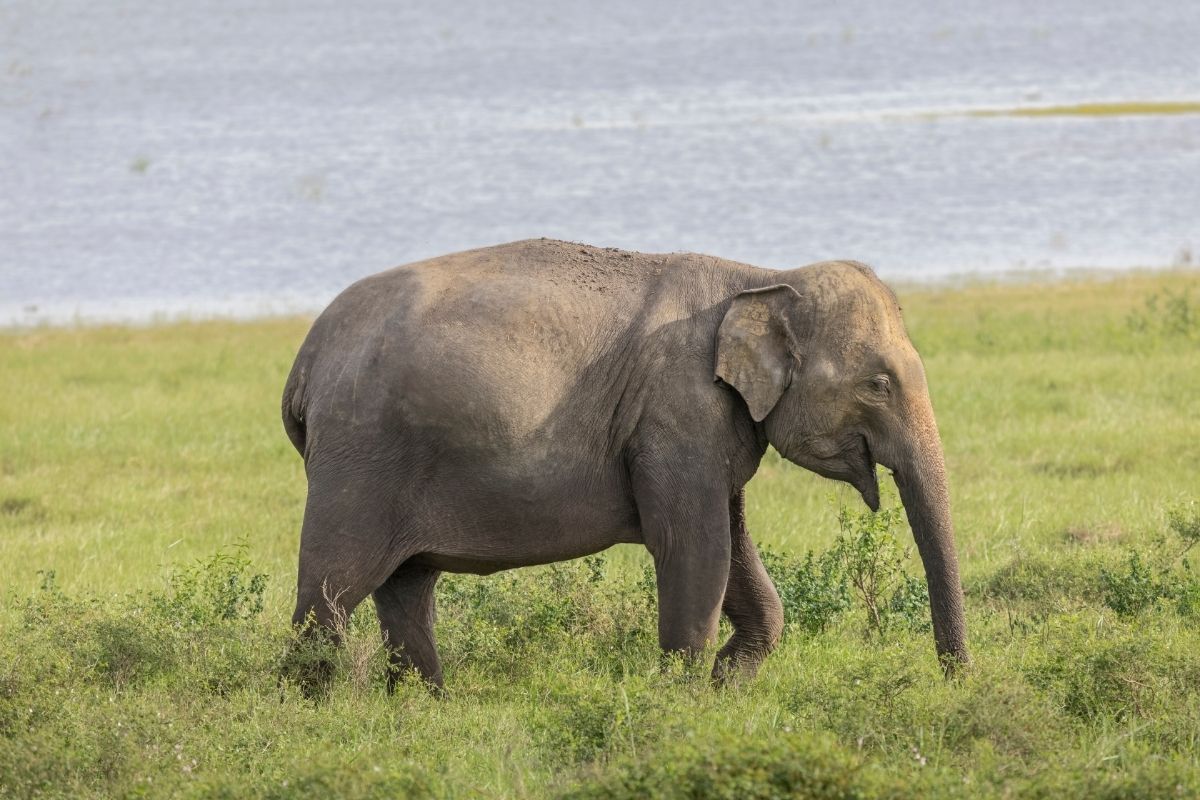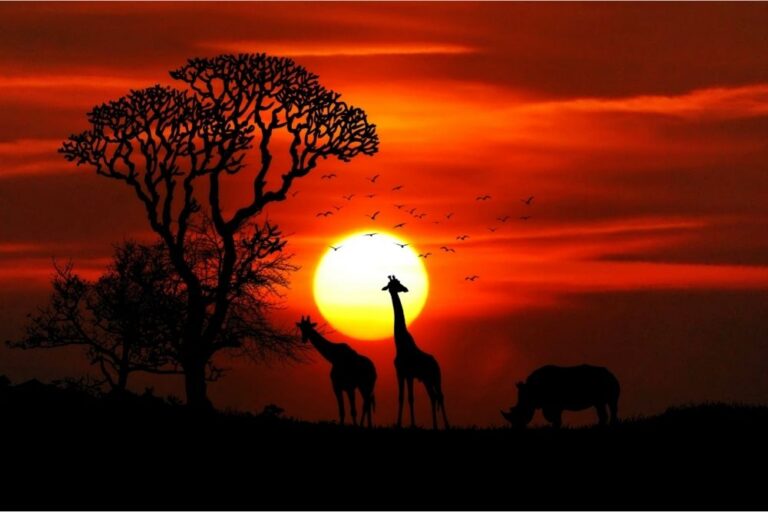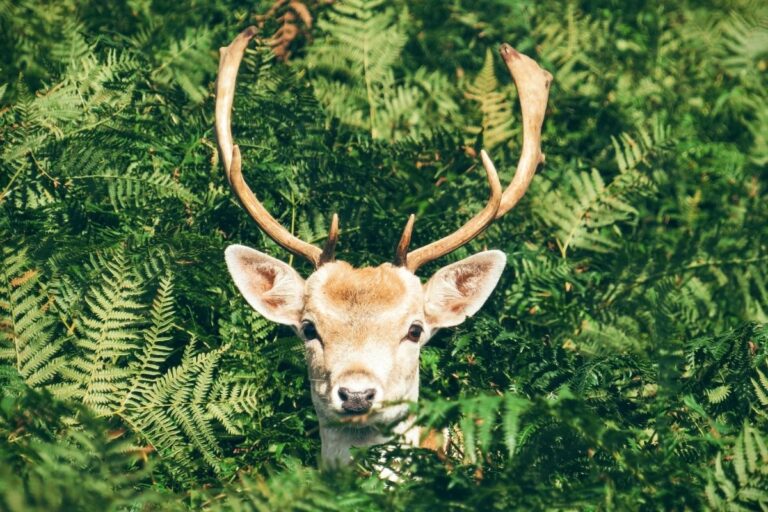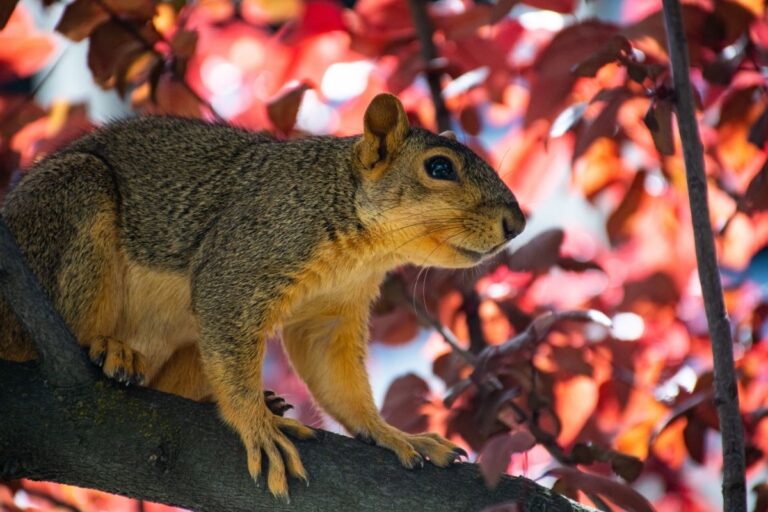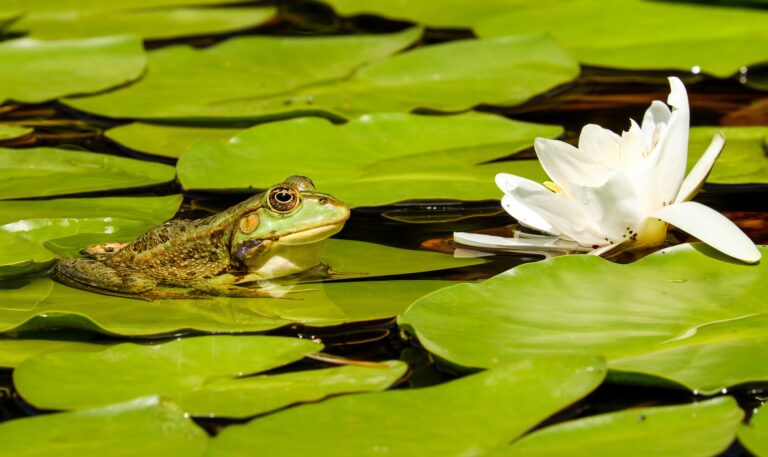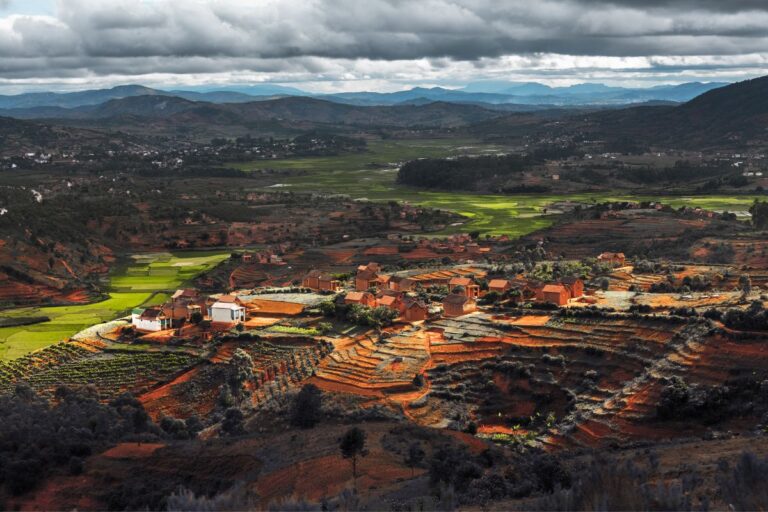Animals That Live In Grassland
Last Updated on February 8, 2022 by
The grassland is one of the most dominant of Earth’s ecosystems.
Of the total land on Earth, grassland takes up between 31 to 43% of it. It is one of Earth’s largest and most expansive biomes, with grasslands ranging from vast Savannah that cover countries to tiny meadows within a woodland.
Without them, we would not have begun cultivation and many of our animal companions would never have existed.
Yet, when we think of animals that live in this habitat, we probably only think of their domesticated descendants.
Cows, horses, donkeys, and others all originated in various plains and grasslands that stretched around the planet.
However, there are many others that continue to dominate these areas as both predators and prey.
These animals have taken on characteristics and forms better adapted to these sprawling, open spaces that are instantly recognizable, even if the creatures are not closely related.
So, if there are so many interesting creatures living in earth’s grasslands, what are they? Are they just roamers into the grasses, or its permanent residents?
Today, we will answer the question of what lives in our grasslands and give the lowdown on some of the unique creatures that have come to call this place home.
Types Of Animals in the Grasslands
Due to this biome’s huge size and the number of animals that live there, it is difficult to describe the different types of animals that live there and what they do.
Some are specialized carrion eaters, some are adaptive canopy hunters, and some are just generalized browsers, the list goes on.
Therefore, we will describe in this list some of the most impressive and important types of animals in the grassland.
Large Herbivore: Elephants
We will start this list of creatures that live on one of Earth’s largest biomes with the largest terrestrial creature: the African Bush Elephant.
With the largest being over 13 feet tall and weighing upwards of 11 tons, African Bush Elephants are nothing to sneeze at.
These animals roam the grasslands, eating up to 150 kg of grasses, herbs, and creepers a day.
They travel in kinship groups of many members, which are normally made up of one matriarch, several adult females, the daughters of said females, and their prepubescent sons.
The matriarch will lead the group in an ever-present quest for food and water, as they are normally the oldest, wisest, and most experienced.
Males leave the group at between 10 and 19 years of age and go off either solo or form their own groups of other males.
Groups of elephants will cooperate when looking for food, water, shelter, or in defense against predatory animals.
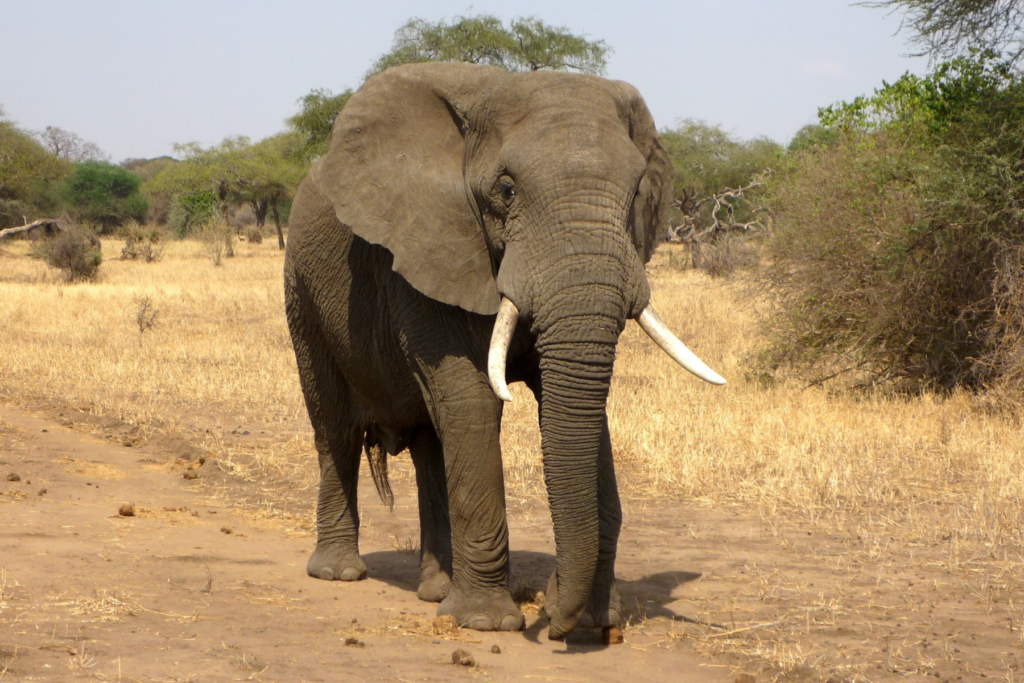
Herd Animal: Equids – Zebras, Donkeys, And Horses
The members of the genealogical family Equidae all originated in grassland environments, with the exception being the donkey, which came from more arid desert environments – though it does surprisingly well in grasslands as well.
Equids live worldwide, however, the last surviving truly wild populations live only in Africa and Asia, with large populations of feral horses living elsewhere but being from domesticated stock.
These creatures live in large social groups, usually consisting of one male and several females.
The male can be challenged by another male and replaced but should the male die naturally then the stability of the group is kept as they wait for a new male to appear.
These groups are nomadic but do have home ranges that they roam around, it’s just that these ranges can be hundreds of miles.
Equids can also gather in larger groups while maintaining their smaller subgroups of tight-knit individuals.
This allows them to socialize and engage with other Equids easily.
Equids primarily eat grasses and have developed large, tall bodies and long, powerful legs, so they can sprint away from danger easily.
Their eyes are perfect for grassland environments as they have them on either side of their head, so they have a wide view of their surroundings and any predators sneaking up on them.
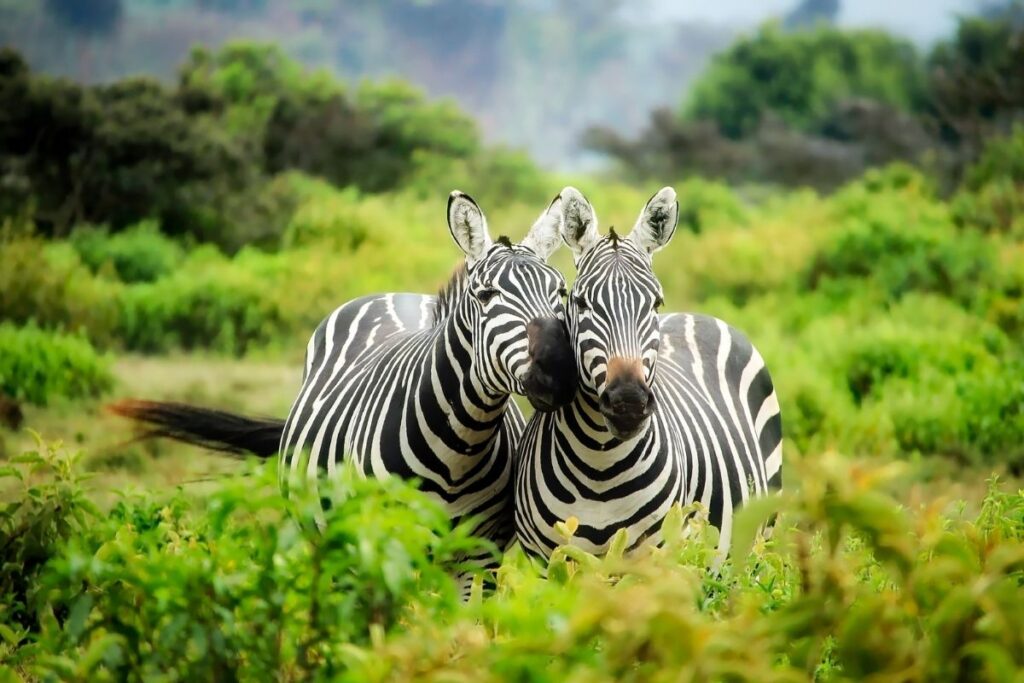
Mid-sized Predator: Cheetahs
If you are wondering why equids and other prey animals need to be so fast, then look no further than a cheetah, the fastest land animal on earth.
While cheetahs can not take down an animal as big as a horse, anything smaller is fair game.
The top recorded speed of a cheetah is 61 mph, which it can reach in just under 6 seconds, faster than a lot of cars.
They need this speed to catch medium-sized galloping herbivores, like gazelles or impalas, due to their own great speed and agility.
Although cheetahs are much more amicable to one another than a lot of big cats, they are also somewhat solitary.
Females will tend to live a solitary life until they have offspring, at which point their daughters will probably stay with them and their sons will eventually leave.
Males have territories, but the fights over them rarely result in injury, and there have been instances of male cheetahs forming alliances and managing a territory together.
Cheetahs are also very chatty. They have many vocalizations that indicate different concepts they wish to convey.
If excited, a cheetah may chirp, if it is very content, it will purr, in fact, a lot of the noises your house cat makes will be similar to cheetahs, in no small part due to their close familial relationship.
Small Herbivore: Prairie Dogs
One of the symbols of the American plains is the prairie dog. For those that don’t know, prairie dogs are not dogs at all but in fact large rodents in the same family as squirrels and chipmunks.
Prairie dogs are about a foot long and are mostly herbivorous, excluding some insects from time to time.
They normally eat different grasses and seeds but adapt to seasonal temperatures and growing times with more forbs and flowers in summer and more roots and tubers in winter.
Prairie dogs are incredibly social but wary creatures. They are adept diggers and build burrows into the ground to protect them from predators and environmental change.
These burrows are commonly expanded and contain up to 15 different family groups that can have 10s of individuals in them.
These places are called prairie dog towns and have been known to span hundreds of acres of land.
The little family groups have one adult male, several adult females, and their offspring. Females will remain in their group for life, but males will leave and try to bond with another group, becoming the breeding male for that clan.
Males will fight for territory and breeding rights against rivals. Even in towns, males from different clans will be antagonistic to one another and see them as a threat.
Being small and numerous makes the prairie dogs a target for predators. They are a keystone species for not only for their activities but also because they are prey.
As such, prairie dogs have a variety of calls to warn each other of potential threats or danger, and they place sentries at different posts to keep an eye out.
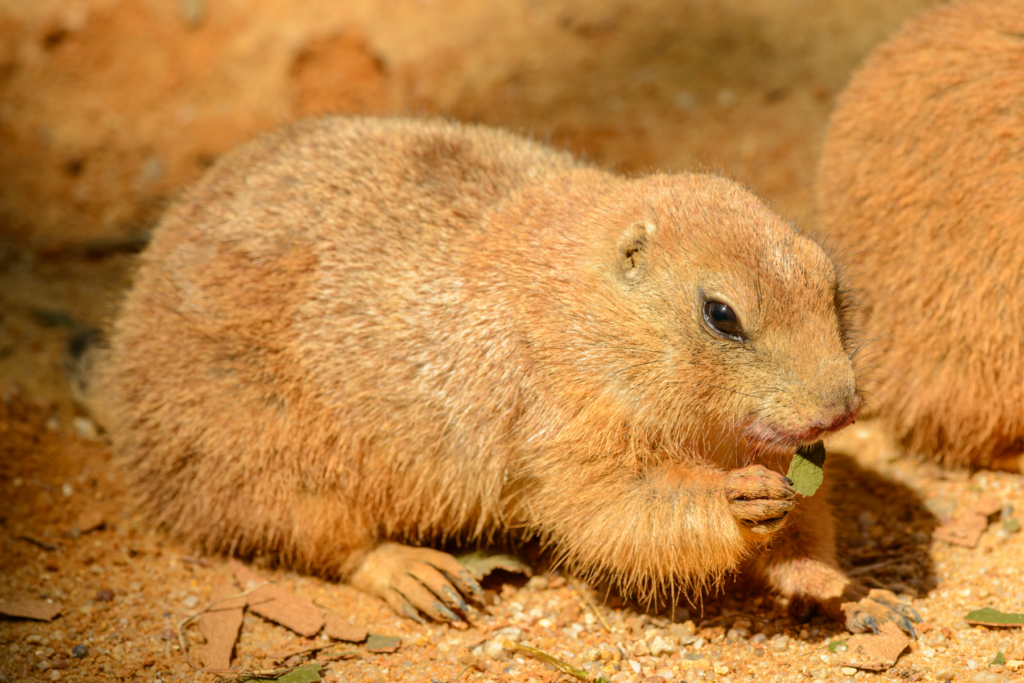
Apex Predator: Lions
Now we come to one of the apex predators of the grasslands, the lion. Lions are one of the few animals that large herbivores fear, with even the mighty rhinos and buffaloes occasionally being prey to these large cats.
Of all the big cat species, lions are probably the most social, with them generally living in large family groups called prides.
Depending on their size, prides are made up of between 1 and 4 males, several adult females (always more than the males), and their offspring. In some very large prides, there are upwards of 30 individuals.
A pride will mostly have a set area or territory that is theirs and is patrolled by the males of the pride, however, there are also lions that are nomadic.
Males will normally have a nomadic phase when they leave their original pride before finding a new one, however, some never give up the nomadic life.
These lions will range over vast areas either alone or in groups of 2 or 3 and interactions between them and other prides can be antagonistic at best.
Lions are hypercarnivores that eat almost exclusively meat. They hunt the animals that few others can: wildebeest, buffalo, giraffe, warthog, and many others.
They even on very rare occasions have taken down lone rhinos or young elephants, but this is normally out of desperation and often results in horrific injuries.
The females of a pride will work together to hunt these huge animals and take them down, using tactics, patience, and persistence.
Due to the environment that lions live in and particularly its heat, hunting is about the only thing they do, as for up to 20 hours per day lions sleep or laze around in the shade.
Final Thoughts
There are many different types of animals that live in the grasslands, and they all have different roles to play in their ecosystem.
It may not look like it, but they are all incredibly important, for example, large predators keep prey numbers down, thus stopping the grassland from being completely eaten and turning to desert.
These are essential ecosystems on earth today, and we should do our best to protect them and the creatures that live in them.

